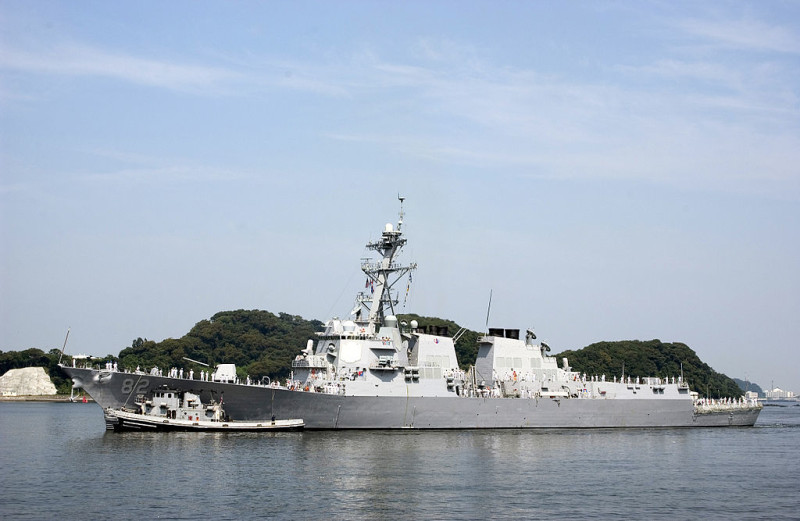A American naval destroyer has been trolling China’s controversial artificial islands in the South China Sea, and China does not like it one bit. The U.S.S. Lassen “conducted a transit” near five reefs Beijing is claiming for their own. China is accusing the U.S. move of being a “very serious provocation” militarily and politically.
At a recent Senate panel, U.S. Defense Secretary Ash Carter said the missions would continue. “We will fly, sail and operate wherever international law permits and whenever our operational needs require,” he said.
The man-made Spratly Islands technically cannot be claimed by a country under international maritime law. Law allows countries to claim ownership of the 12-nautical mile area surrounding natural islands, but not reefs that have been artificially built up.
Roger Baker, with the Austin-based global intelligence firm Stratfor, says for China the controversy is about national posturing. For the U.S., it’s about asserting the country’s continued role as an international broker and upholding the right for freedom of navigation.
“For the Chinese, it’s a real strategic issue,” he says. “As they’ve undergone their economic development, they’ve become more and more dependent upon imported and exported sources of raw materials, and their products that sell abroad. That puts them somewhat vulnerable in the maritime space…. They’re trying to find a way to defend this space and they’re claiming it as all their own water.”
The South China Sea is boxed in by Vietnam, Japan and the Philippines – all with a favorable view of the U.S. The Philippines, in fact, has asked for the U.S. to take a stronger role in the area. The U.S. has been expanding its relationship with Vietnam. But Indonesia, Baker says, has criticized the move. Taiwan, normally a U.S. ally, claims everything that China claims.
What does this mean for U.S. trade? Baker says we’re not going to see an impact on shipping yet.
“For the most part, despite the very public shows and noise, the two countries are being very careful not to let this get out of hand,” he says. “The U.S. can keep sailing its ships here and there, and the Chinese can keep asserting that this is their territory, so long as neither one decides that they’re going to forcefully stop the other.”
There has been an increase in dialogue between the two countries, Baker says. In part, it’s to set out the rules of engagement. But the real question, he says, is less what the rules are for the military, and more about the day-today of civilians in the area.
“Another aspect of this sea is that it’s one of the primary sources of maritime protein for most of the countries in East Asia,” he says. “You have a lot of fishing fleets out there, and each one of them feels that they have the right to be pretty much anywhere.”















